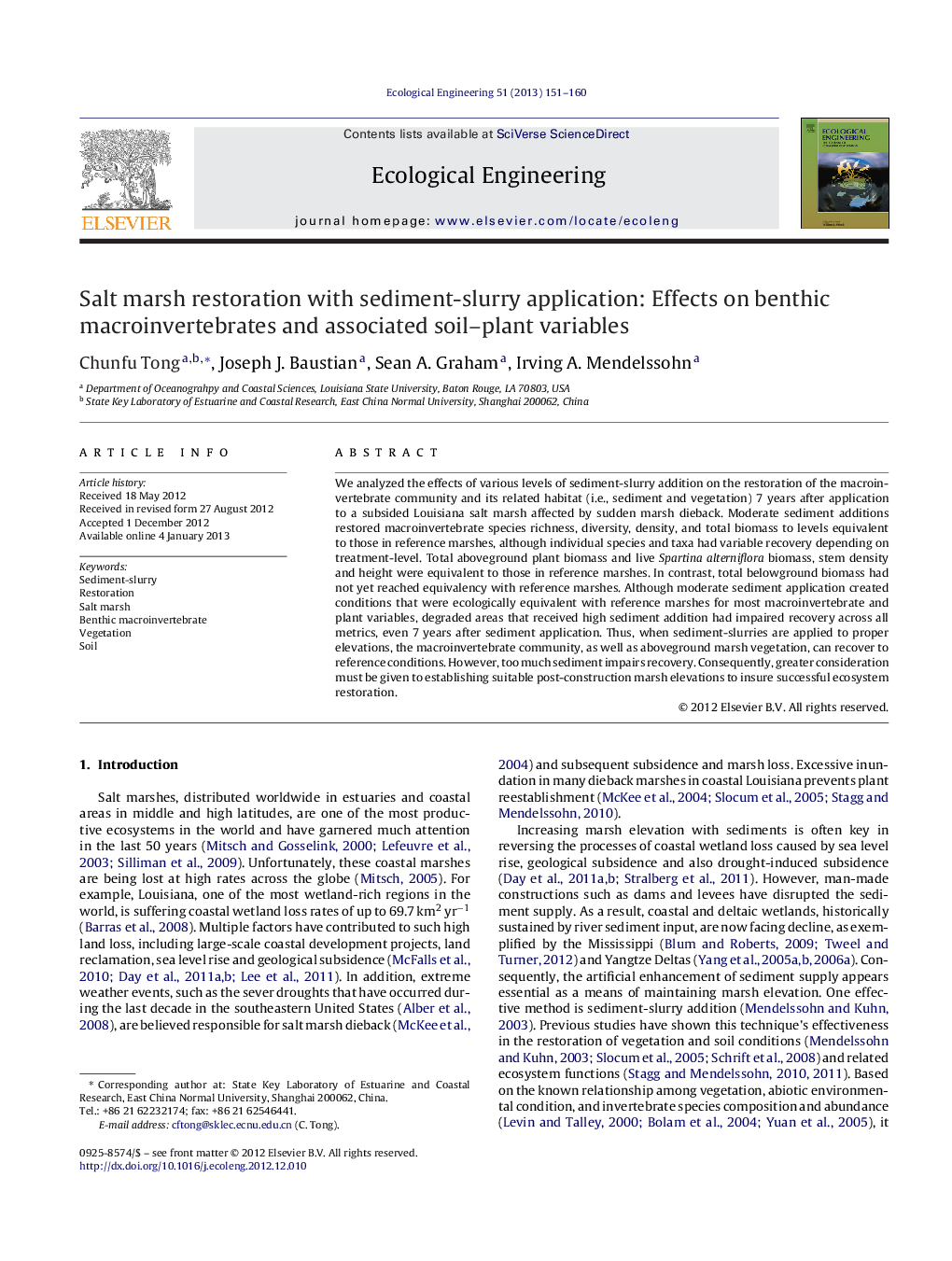| Article ID | Journal | Published Year | Pages | File Type |
|---|---|---|---|---|
| 4389839 | Ecological Engineering | 2013 | 10 Pages |
We analyzed the effects of various levels of sediment-slurry addition on the restoration of the macroinvertebrate community and its related habitat (i.e., sediment and vegetation) 7 years after application to a subsided Louisiana salt marsh affected by sudden marsh dieback. Moderate sediment additions restored macroinvertebrate species richness, diversity, density, and total biomass to levels equivalent to those in reference marshes, although individual species and taxa had variable recovery depending on treatment-level. Total aboveground plant biomass and live Spartina alterniflora biomass, stem density and height were equivalent to those in reference marshes. In contrast, total belowground biomass had not yet reached equivalency with reference marshes. Although moderate sediment application created conditions that were ecologically equivalent with reference marshes for most macroinvertebrate and plant variables, degraded areas that received high sediment addition had impaired recovery across all metrics, even 7 years after sediment application. Thus, when sediment-slurries are applied to proper elevations, the macroinvertebrate community, as well as aboveground marsh vegetation, can recover to reference conditions. However, too much sediment impairs recovery. Consequently, greater consideration must be given to establishing suitable post-construction marsh elevations to insure successful ecosystem restoration.
